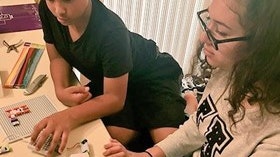Homepage
•
Learning Library
•
Blog
•
Teach kids computer science through design and inquiry
Expand breadcrumbs
Expand breadcrumbs
- Learning Library
- Blog
- Teach kids computer science through design and inquiry
- Homepage
- •
- Learning Library
- •
- Blog
- •
- Teach kids computer science through design and inquiry
Teach kids computer science through design and inquiry
By Jorge Valenzuela
December 4, 2017








